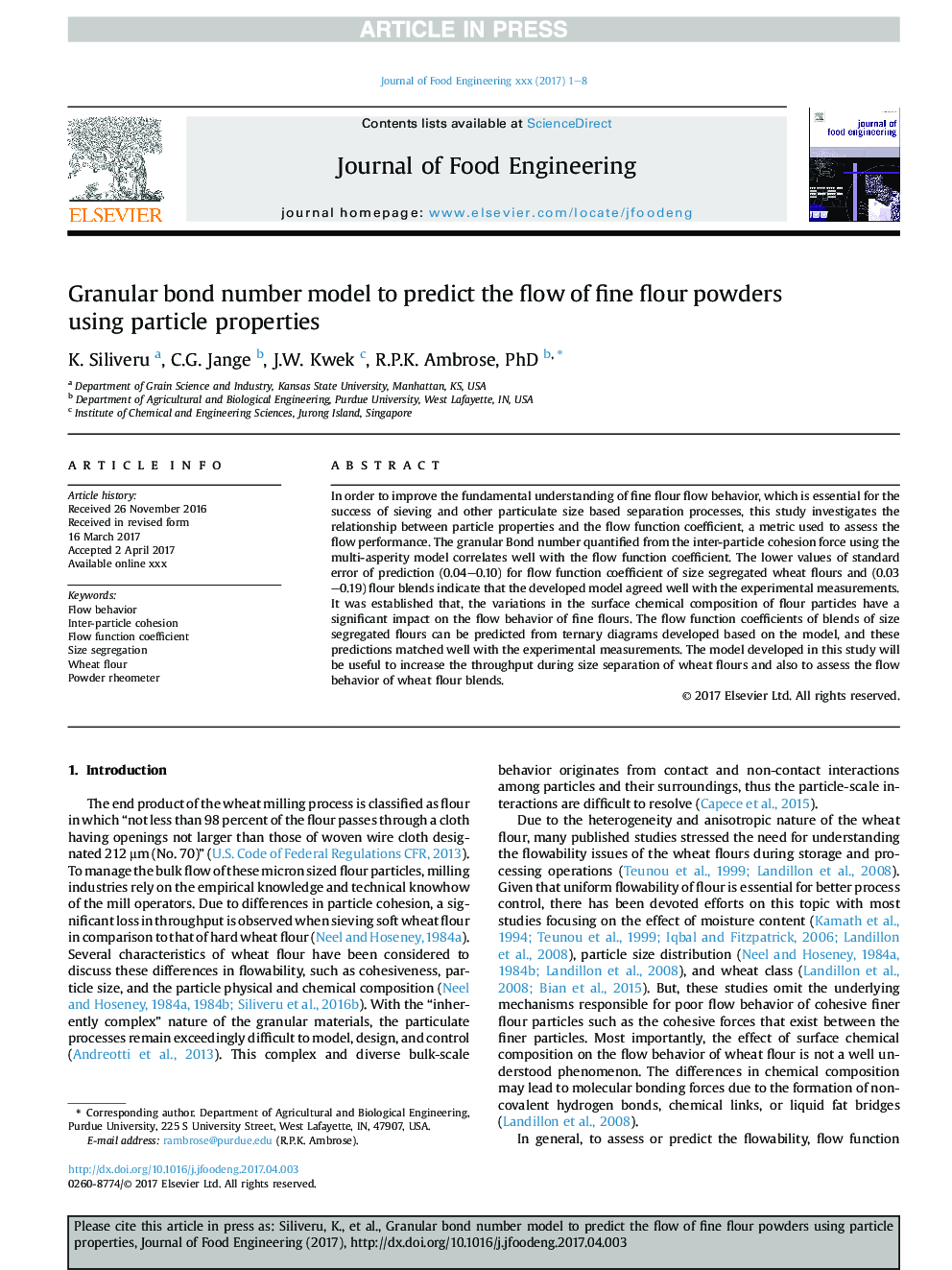| Article ID | Journal | Published Year | Pages | File Type |
|---|---|---|---|---|
| 4908986 | Journal of Food Engineering | 2017 | 8 Pages |
Abstract
In order to improve the fundamental understanding of fine flour flow behavior, which is essential for the success of sieving and other particulate size based separation processes, this study investigates the relationship between particle properties and the flow function coefficient, a metric used to assess the flow performance. The granular Bond number quantified from the inter-particle cohesion force using the multi-asperity model correlates well with the flow function coefficient. The lower values of standard error of prediction (0.04-0.10) for flow function coefficient of size segregated wheat flours and (0.03-0.19) flour blends indicate that the developed model agreed well with the experimental measurements. It was established that, the variations in the surface chemical composition of flour particles have a significant impact on the flow behavior of fine flours. The flow function coefficients of blends of size segregated flours can be predicted from ternary diagrams developed based on the model, and these predictions matched well with the experimental measurements. The model developed in this study will be useful to increase the throughput during size separation of wheat flours and also to assess the flow behavior of wheat flour blends.
Keywords
Related Topics
Physical Sciences and Engineering
Chemical Engineering
Chemical Engineering (General)
Authors
K. Siliveru, C.G. Jange, J.W. Kwek, R.P.K. PhD,
